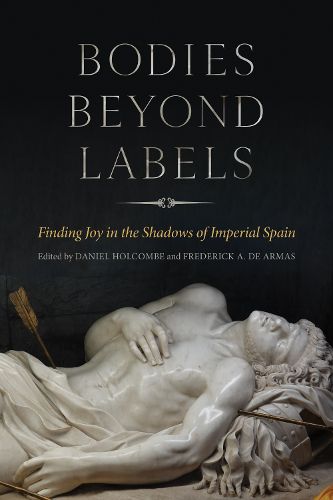Readings Newsletter
Become a Readings Member to make your shopping experience even easier.
Sign in or sign up for free!
You’re not far away from qualifying for FREE standard shipping within Australia
You’ve qualified for FREE standard shipping within Australia
The cart is loading…






Bodies beyond Labels explores moments of joy and joyful expressions of self-identity, intimacy, sexuality, affect, friendship, social relationships, and religiosity in imperial Spanish cultures, a period when embodiments of such joy were shadowed by comparatively more constrictive social conventions.
Viewed in this manner, joy frames historic references to gender, sexuality, and present-day concepts of queerness through homoeroticism, non-labelled bodies, gender fluidity, and performativity. This collection reveals diverse glimmers of joy through a variety of genres, including plays, poems, novels, autobiographies, biblical narratives, and civil law texts, among others. The book is divided into five categories: theatrical works that use mythology to enjoy themes of homoeroticism; narrative prose and visual arts that reveal public and private homoerotic expressions; scopophilia within garden and museum spaces that make possible joyous observations of non-labelled and non-corporeal bodies; biblical narratives and epistolary works that signal religious transgressions of gender and friendship; and sexual geographies explored in historic and legal documents.
As new generations develop more nuanced senses of gender and sexual identities, Bodies beyond Labels strives to provide new academic optics, as framed by non-labelled bodies, queer theorizations, joy in unexpected places, and the light that has historically (re)emerged from the shadows.
$9.00 standard shipping within Australia
FREE standard shipping within Australia for orders over $100.00
Express & International shipping calculated at checkout
Bodies beyond Labels explores moments of joy and joyful expressions of self-identity, intimacy, sexuality, affect, friendship, social relationships, and religiosity in imperial Spanish cultures, a period when embodiments of such joy were shadowed by comparatively more constrictive social conventions.
Viewed in this manner, joy frames historic references to gender, sexuality, and present-day concepts of queerness through homoeroticism, non-labelled bodies, gender fluidity, and performativity. This collection reveals diverse glimmers of joy through a variety of genres, including plays, poems, novels, autobiographies, biblical narratives, and civil law texts, among others. The book is divided into five categories: theatrical works that use mythology to enjoy themes of homoeroticism; narrative prose and visual arts that reveal public and private homoerotic expressions; scopophilia within garden and museum spaces that make possible joyous observations of non-labelled and non-corporeal bodies; biblical narratives and epistolary works that signal religious transgressions of gender and friendship; and sexual geographies explored in historic and legal documents.
As new generations develop more nuanced senses of gender and sexual identities, Bodies beyond Labels strives to provide new academic optics, as framed by non-labelled bodies, queer theorizations, joy in unexpected places, and the light that has historically (re)emerged from the shadows.